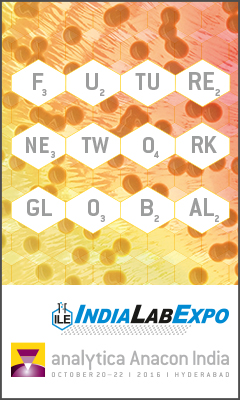|
L&Mint-int-3-2014
Brain models in 3Dlabor&more in conversation with Dr Madeline Lancaster, winner of the Eppendorf Award for Young European Investigators 2014
US research scientist Dr Madeline A. Lancaster (Marie Curie Postdoctoral Research Fellow, Juergen Knoblich lab, Institute for Molecular Biotechnology (IMBA) at the Austrian Academy of Sciences in Vienna) has been presented with the Eppendorf Award for Young European Investigators 2014 in recognition of her outstanding achievements in research.
 Complex API deliveryCellular transport proteins and API transport - von Prof. Gert Fricker, Dr. Anne Mahringer
A medicine's potency often depends on the concentration of its active ingredient (API) at the target site. Medicines are usually delivered remotely to this target site, however. The API must first dissolve and traverse local barriers such as the intestinal wall before it can enter the bloodstream and then reach its target site. For a long time, work in this area was guided by the dogma that API diffusion was the force driving absorption by the body...
 DUPHAT 2014The largest Pharmacy event in Middle East
Dubai International Pharmaceuticals & Technologies Conference & Exhibition once again claimed its rightful place as the premier international conference and exhibition of the Pharmaceutical Industry in the Middle East. The event offered opportunity to discover the latest innovations and ideas from over 420 international manufactures from more than 73 countries. It also provided indepth coverage of key issues facing the industry through interactive...
 MOSH/MOAH food contaminationFocus on mineral oil residues - von Prof. Dr. Reinhard Matissek, Dr. Marion Raters, Anna Dingel, Julia Schnapka
Mineral oils are almost universally present in our environment. Their constituents can infiltrate foods of both plant and animal origin in many different ways. From the perspective of their chemical structure, the main compounds of interest are mineral oil saturated hydrocarbons (MOSH) and – to a proportionally lesser extent – mineral oil aromatic hydrocarbons (MOAH).
 Technische Universitaet (TU) Darmstadt furthers its connections by opening a new liaison office in ShanghaiBridge to China - von Isabelle Harbrecht
International exchange and cooperation are becoming more and more important in the higher education sector; universities are competing globally for the brightest minds. China, one of Germany’s most important economic and political partners and a country that traditionally values education, has set the development of its vast human resources as a strategic goal. During the 12th Five-Year-Plan, government reached its goal of spending 4% of the annual...
 The analytica China Conference offers solution approaches for contamination of all kindsScience we need
The People's Republic of China faces a number of challenges such as in the production and packaging of food, the quality control of drugs, air pollution in large cities, and diseases of modern society such as diabetes mellitus. These and other topics will be the focus of this year's analytica China Conference, the title of which is "Analytical chemistry – Science we need". The conference takes place in Shanghai at the same time as analytica China,...
 Tropical pitcher plant and biomimeticsHierarchical anti-adhesive surfaces by mimiking insect traps - von Prof. Stanislav N. Gorb, Prof. Martin Steinhart
Carnivorous plants, among them tropical pitcher plants (Nepenthes spp.), have always fascinated people due to their remarkable ability to feed on animals and have constantly drawn the attention of researches as soon as new species were discovered. During past decades, different aspects of Nepenthes biology, among them the structure and functions of trapping organs (pitchers), particularly with respect to their trapping efficiency, have been the focus...
 Viruses in the waterDetection and analysis of human viral pathogens in surface waters - von Dr. Lars Jurzik, Mats Leifels
Alongside the development of methods for quantifying human viral pathogens in surface and waste waters, a key role is also played by the analysis of the resultant data. While drinking water supplies must be safeguarded on the one hand, the public must also be able to pursue waterrelated recreation activities without fearing health risks.
 When tuberculosis faces an even stronger opponentDetecting tuberculosis – contribution to the battle against infectious diseases - von Carl ZEISS Microscopy Jena
Tuberculosis (TB) is second only to HIV/ AIDS for the dubious distinction of being the world’s greatest killer. TB is a bacterial disease caused by a single infectious agent, <i>Mycobacterium tuberculosis</i>,which most commonly affects the lungs. It is transmitted from person to person via droplets from the throat and lungs of people who have the active respiratory disease.
 |
L&M int. 3 / 2014
|



















